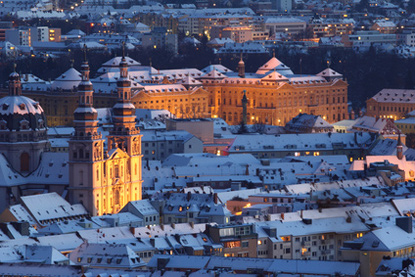 Würzburg.
Würzburg.
Introduction
Würzburg was the seat of a wealthy and powerful Prince-Bishopric until 1801. The episcopal Würzburg Residence is one of the grandest baroque palaces in Europe, a World Heritage Site, and a definite highlight of Germany.
Würzburg Cathedral, started nearly 1000 years ago, is the fourth largest Romanesque church in Germany. The massive Marienberg Fortress, perched on a hill and visible from all over the city, was the medieval and Renaissance residence of the local rulers.
Opening Hours & Admission
The Würzburg Residence is open daily from 9:00 am to 6:00 pm, (10:00 am to 4:30 pm from November-March). The last entry is 30 minutes before closing time. The annual closing days are 1st January, Shrove Tuesday and 24th, 25th and 31st December.
Admission costs 7.5 € for adults and 6.5 € for concessions (students, seniors, disabled). It is free for children under 18 years old.
Admission includes a guided tour of the main rooms. Tours in English are held daily at 11:00 am and 3:00 pm, (+ 4:30pm from April to October). Tours in German start every 30 minutes.
The Marienberg Fortress is open daily (except Mondays) from 9:00 am to 6:00 pm. It is closed from 1st November to 15th March.
Admission costs 4.5 € for adults and 3.5 € for concessions (students, seniors, disabled). It is free for children under 18 years old.
Access Map
View Larger Map
Travel Community
Ask your travel questions on the Germany Travel Forum